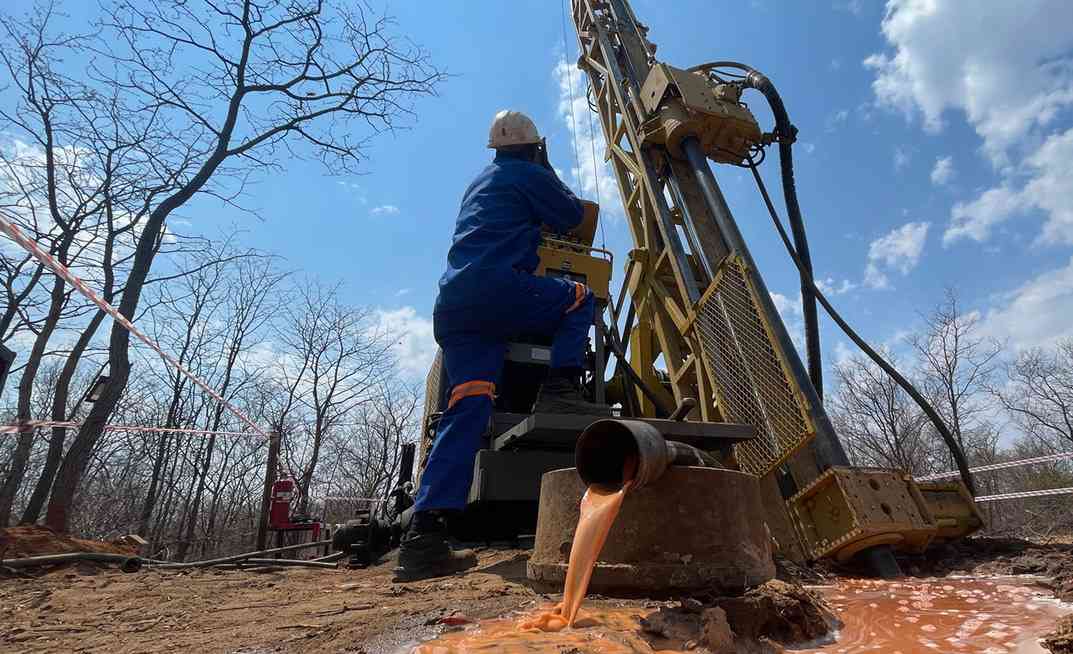
SOCIAL COMMENTARY: By Moses Mugugunyeki
For close to three decades, the lives of new mothers and babies in Binga’s Siansundu ward was put at risk by an unreliable supply of safe water, lack of good hygiene and an inadequate toilets at the local health facility — Siansundu Clinic.
While maternal health care services have been ameliorated in some parts of the country, the maternal mortality rate for marginalised communities, Binga included remains high.
In Binga and many other hard-to-reach communities, a large chunk of births occur in places without safe water and poor sanitary conditions.
According to the Multiple Indicator Cluster Survey of 2019, Zimbabwe has a maternal mortality ratio of 462 deaths per 100 000 live births, and a neonatal mortality rate of 32 deaths per 1 000 live births.
An estimated 8% of maternal deaths (and up to 15% in low- and middle-income countries) can be directly linked to unhygienic conditions during labour and birth and poor post-natal hygiene.
In Binga where there are a handful of health facilities coupled by their sorry sanitary conditions, a number of women opt to give birth at home where the chances of delivering a child in a clean environment are even lower.
A 2015 World Health Organisation [WHO] report that 38% of health facilities in low- and middle-income countries, Zimbabwe included, lacked access to safe water, 19% lacked sanitation and 35% lacked water and soap for hand-washing.
- Chamisa under fire over US$120K donation
- Mavhunga puts DeMbare into Chibuku quarterfinals
- Pension funds bet on Cabora Bassa oilfields
- Councils defy govt fire tender directive
Keep Reading
Similarly, a study examining health facilities offering maternal health services in East and Southern Africa found that only 36% of primary facilities (those that do not perform cesarean sections) and 60% of secondary facilities (those that do perform cesarean sections) had adequate safe water.
Siansundu clinic serves four wards in Binga, one of the largest catchment areas a primary health facility is set to serve, and for close to three decades the facility has had to make do with dilapidated ablution facilities.
Expecting mothers were exposed to dirty and stagnant water due to poor sanitation at the clinic leading lead to malaria, typhoid, dysentery and amoebiasis, which resulted in miscarriage, foetal death and maternal mortality.
A villager, Micho Munkuli, recalled how the health facility has for years operated without proper water and sanitation facilities.
“The ablution facility at the clinic was last used in 1992, since then patients, especially expecting mothers had to use the Blair toilets some metres away from the maternity ward,” said Munkuli.
This publication established that the ablution facility has two toilets and two bathing facilities (a shower close to the outside toilets and one inside the labour ward).
The drainage system for the two toilets and the bathroom facilities are blocked from the pipes to the septic tank and soak away, forcing the facility to be closed since 1992.
The current staff at the clinic said they have no idea on when the ablution facilities were last used because when they arrived at the institution, the facilities were already decrepit.
However, a just-ended Zimbabwe Red Cross Society (ZRCS) water, sanitation and hygiene programme with support from Unicef under the Covid 19 response project implemented for six months in Binga’s five wards (7, 8, 9, 10 and 13) changed the face of Siansundu clinic in as far as water, sanitation and hygiene is concerned.
The Siansundu project, which included the refurbishment of the ablution facility, was part of a broaderCovid-19 WASH project to the tune of US$650 000, which was also being implemented in six other districts namely Harare [Hopley], Marondera Urban, Muzarabani, Mangwe, Siakobvu and Kwekwe Rural.
“Red Cross has changed the story of Siansundu clinic, thanks to the Covid-19 WASH programme.
“The main beneficiaries of the ablution facilities are the admitted patients and women who are on labour or soon after delivery who need clean sanitation facilities and water,” said a health worker at the clinic, who spoke on conditions of anonymity for professional reasons.
“Before the intervention, women after delivery or during the labour process had to walk a distance to the Blair toilets, but now they can move a few steps to the bathroom and ablution facilities which are more user-friendly.
“The intervention has brought relief to mothers, particularly those in labour and after delivery. They can now bath within the labour ward and can easily access toilets just close to the labour ward.”
Siphathekile Mumpande from Mabobolo village, who had visited a sister admitted at Siansundu clinic, said the improved sanitary facilities would go a long way in easing the pressure on patients, particularly pregnant women.
“The washing basins were non-functional before Red Cross intervention but the patients can now wash their clothes close to the washing lines,” said Mumpande.
“A few years back it was not like this. Expecting mothers had to walk a distant to the toilets, but now they can use the toilets inside the clinic and there is a bath section within the labour ward.”
ZRCS secretary-general Elias Hwenga said Binga was among seven districts in the country where the organisation was carrying a six-month WASH programme.
“Zimbabwe Red Cross Society with support from Unicef was implementing an emergency water and sanitation and Covid-19 response project in five wards (7, 8, 9, 10 and 13) of Binga district,” Hwenga said.
“Part of the project included the repairing of two pipelines (Siamuloba and Samende pipelines) and the repairing of Siansundu clinic sanitation facility.
“The other component of the project included the Covid-19 mobile awareness campaigns, Covid-19 trainings, water point committee trainings, volunteer-driven door-to-door awareness campaigns and non-food items distributions.
“All the activities were successfully completed as planned despite the challenges which the project faced.”
Public health expert Johannes Marisa said water, sanitation and hygiene were critical in health facilities particularly on preventing infection.
“Mothers can give birth safely and keep their children healthy once at home if they have safe water and basic sanitation,” Marisa said.
“Diarrhoea, which is usually caused by bacterial, viral and parasitic organisms, is the second-leading cause of death in children under five.”
According to the WHO, each year diarrhoea kills 525 000 children under five globally and safe drinking water, use of improved sanitation and hand washing with soap are viewed as key interventions in reducing the disease.
Hardlife Mudzingwa, the national coordinator of the Community Water Alliance, an organisation that does advocacy work in WASH, environment and climate issues, said water, sanitation and hygiene were integral component in maternal health.
“I think you are quite aware that at a clinic where there was no water, expecting mothers were told to bring their own buckets of water and this was done to maintain the standard of hygiene in the health facility or to guarantee the safety of new child against infections caused by waterborne diseases and other diseases caused by poor sanitation,” Mudzingwa said.
“If WASH standards are not maintained in health facilities or at home, we might have a situation where a baby will suck a contaminated breast. There are several issues that require water like laundry where we require the safety of the child’s clothing.”
Mudzingwa said there was need for health facilities to have solar-powered boreholes that guarantee consistent supply of water.
“With solar power you are guaranteed of water supply 24/7, there is no load shedding, power-cuts or those exorbitant charges of electricity,” he said.
“There is also need to capacitate health workers on WASH and inculcate behaviour change on patients to see the importance of basic sanitation issues like hand-washing.”
He said the Community Water Alliance was working with a number of organisations including Unicef and GIZ on a cocktail of programmes meant to address WASH in communities, including in health facilities.









